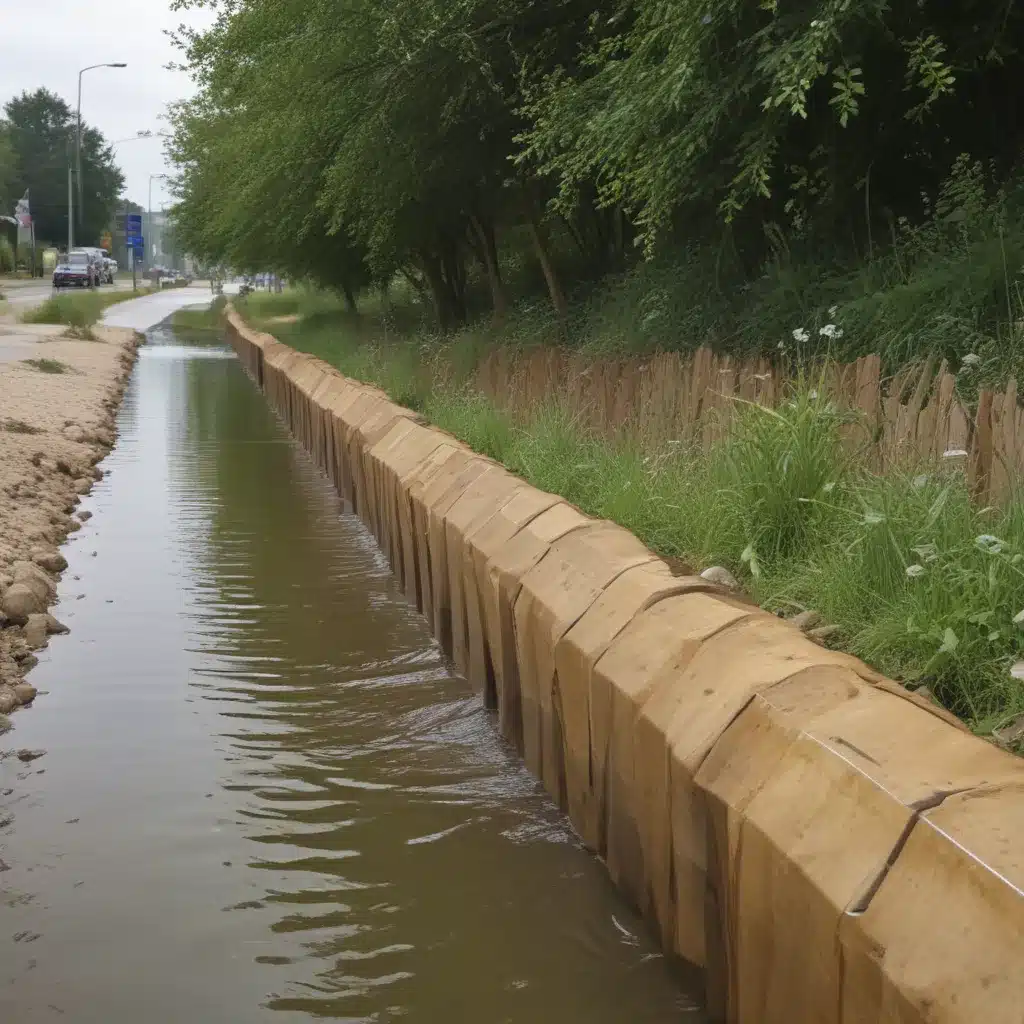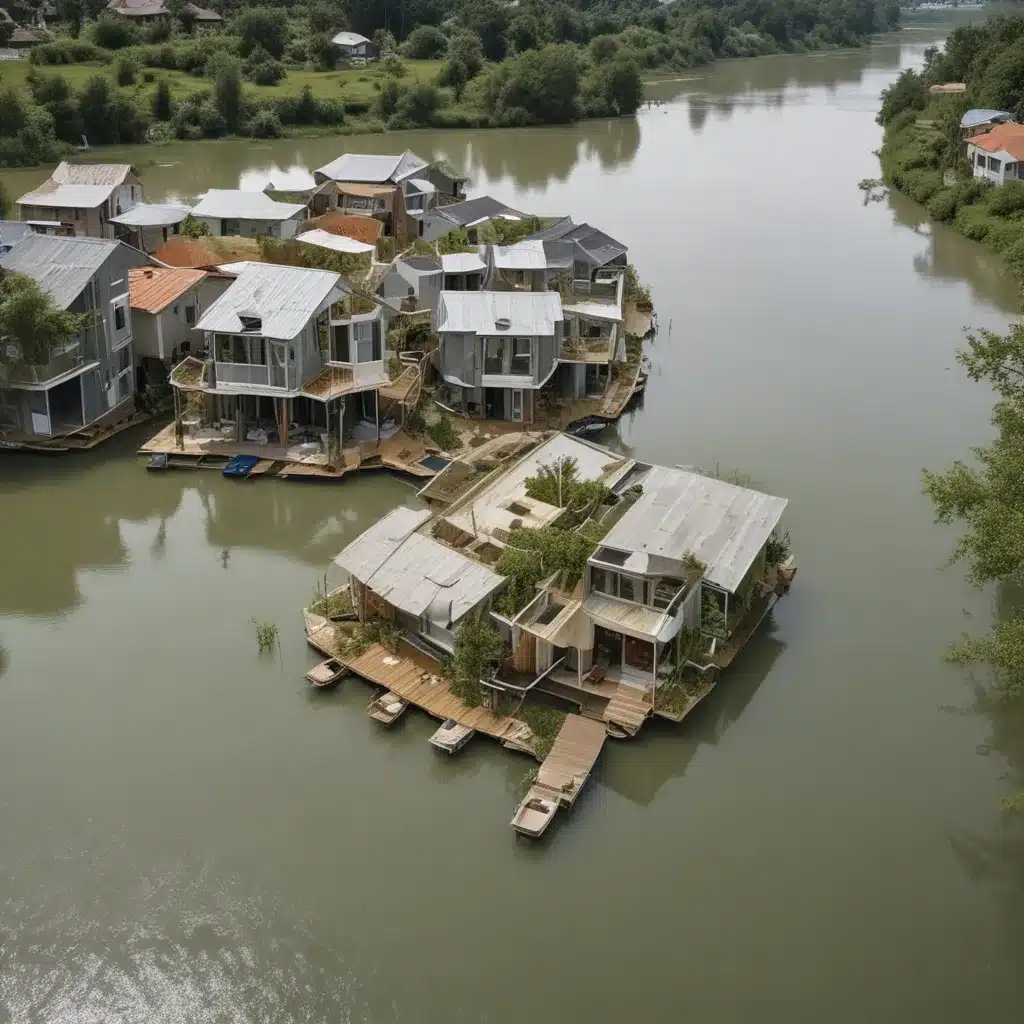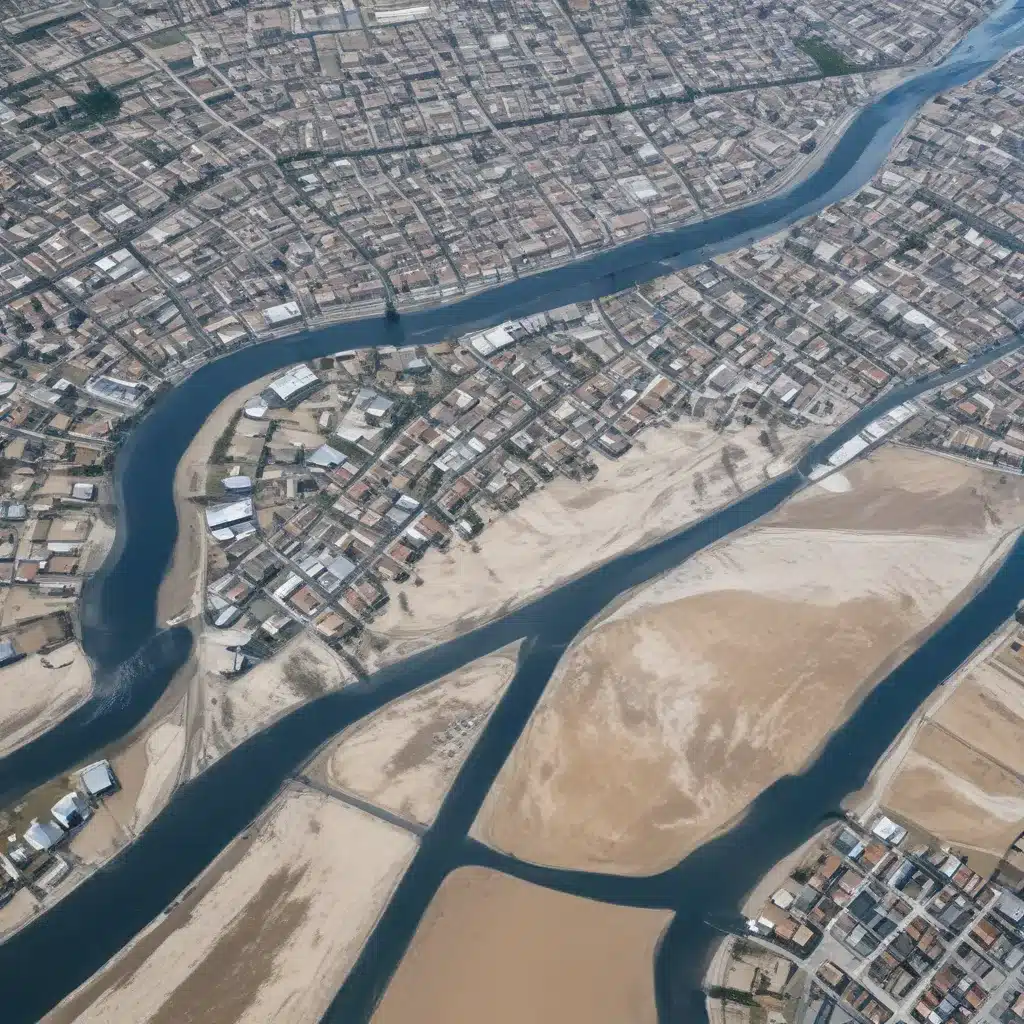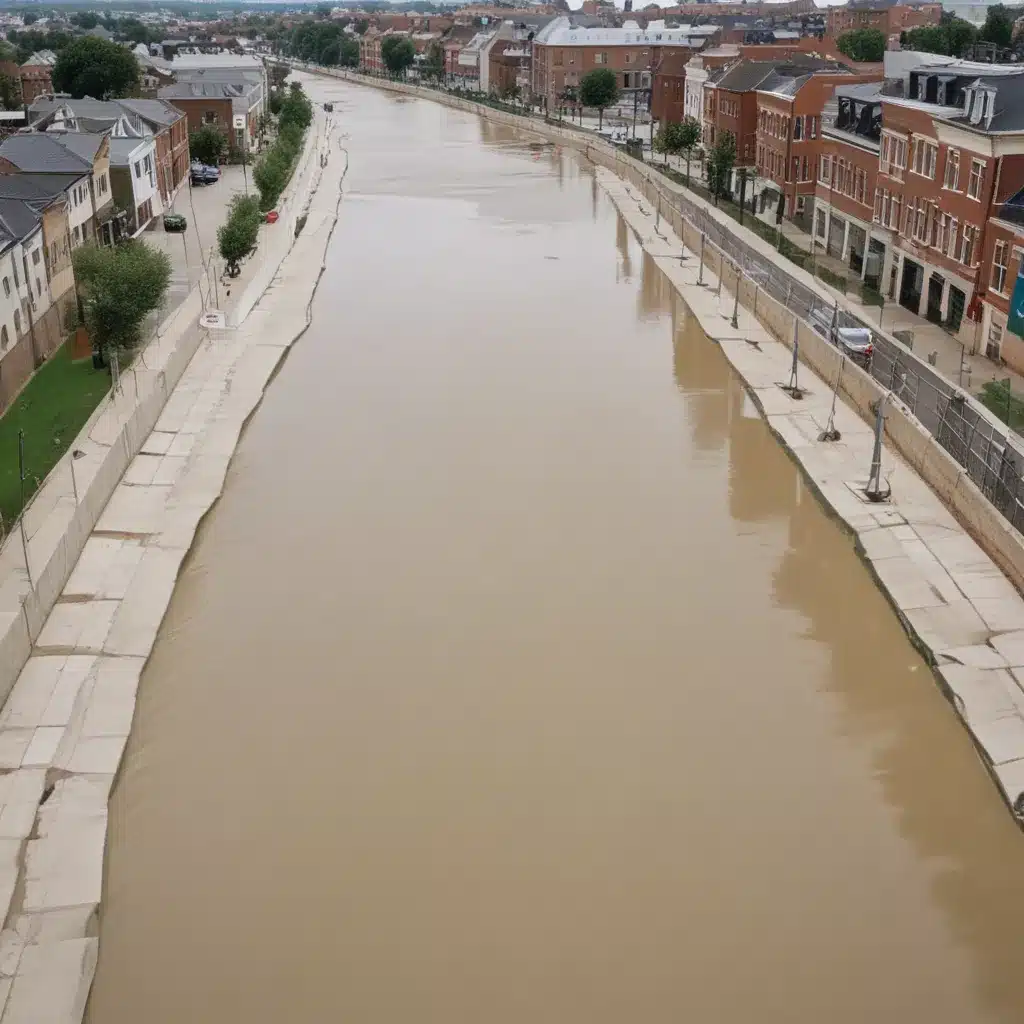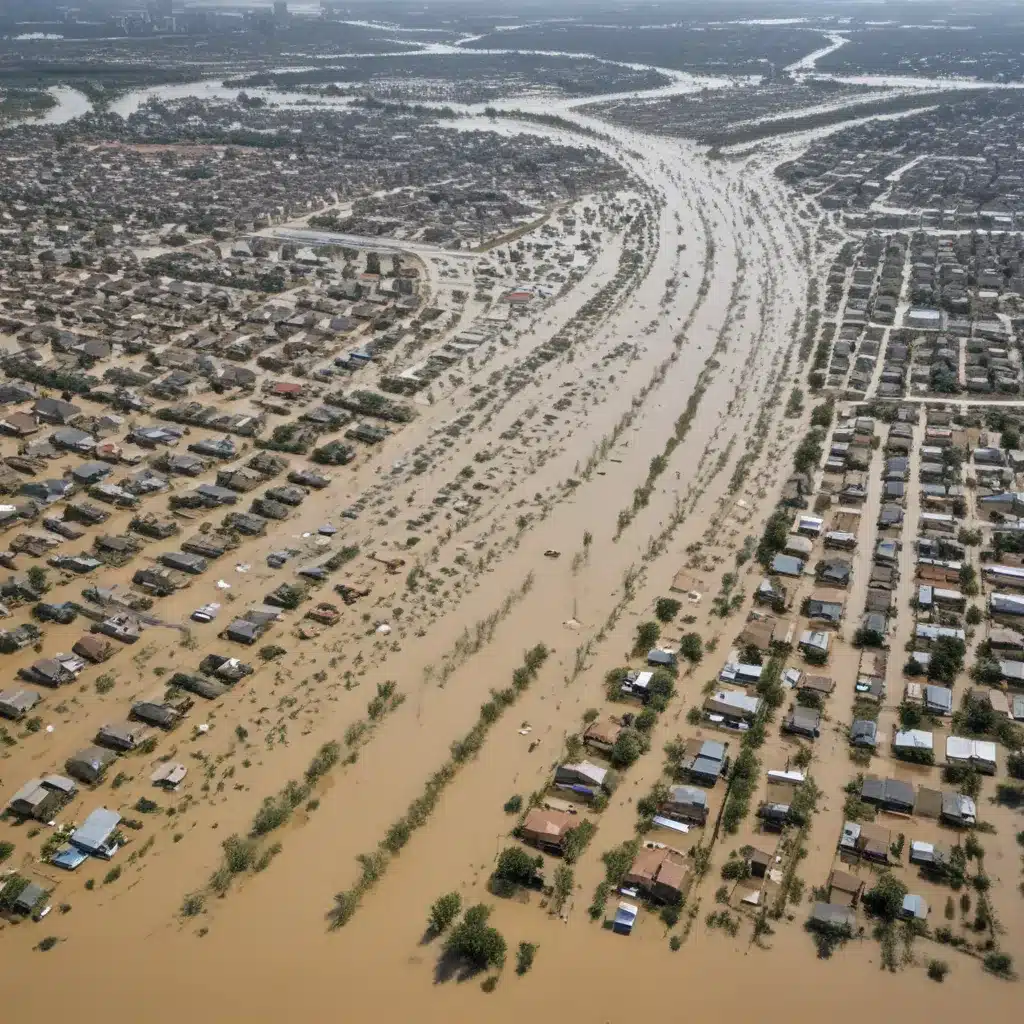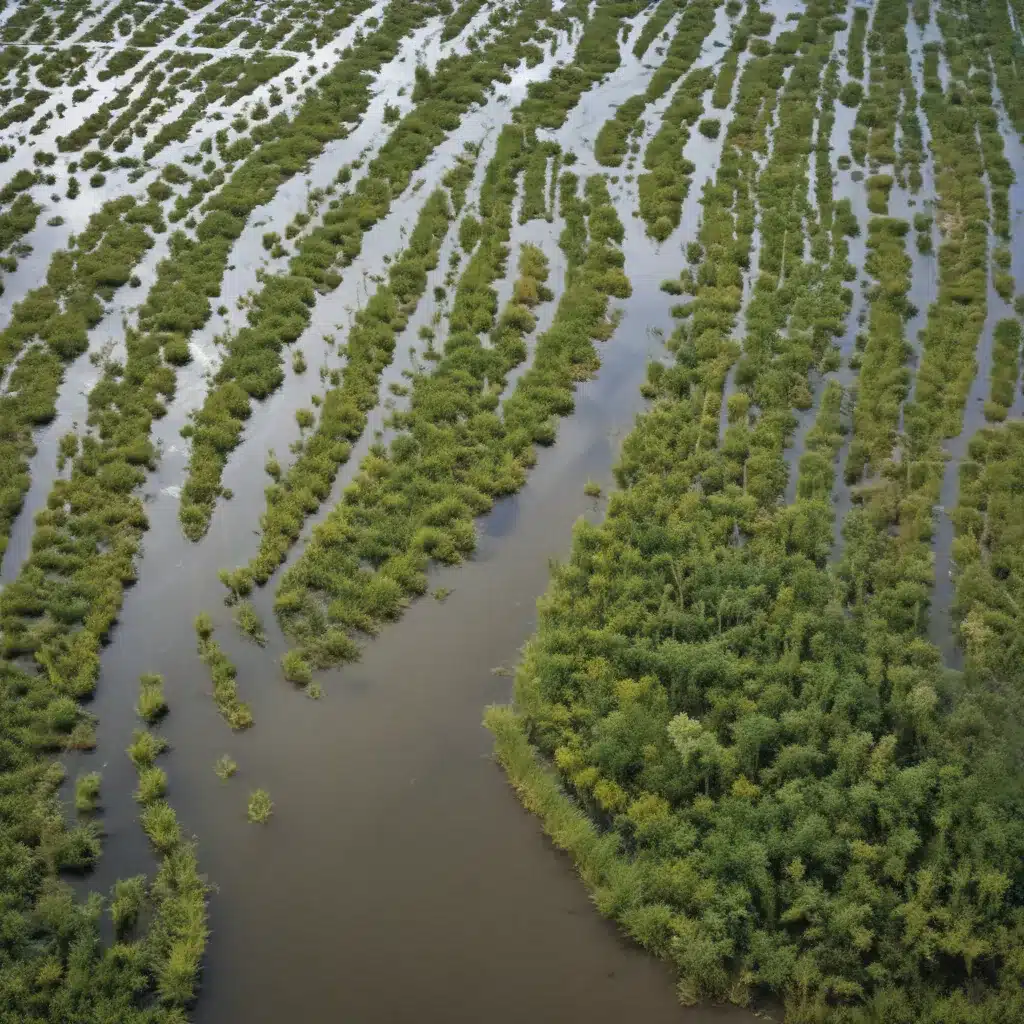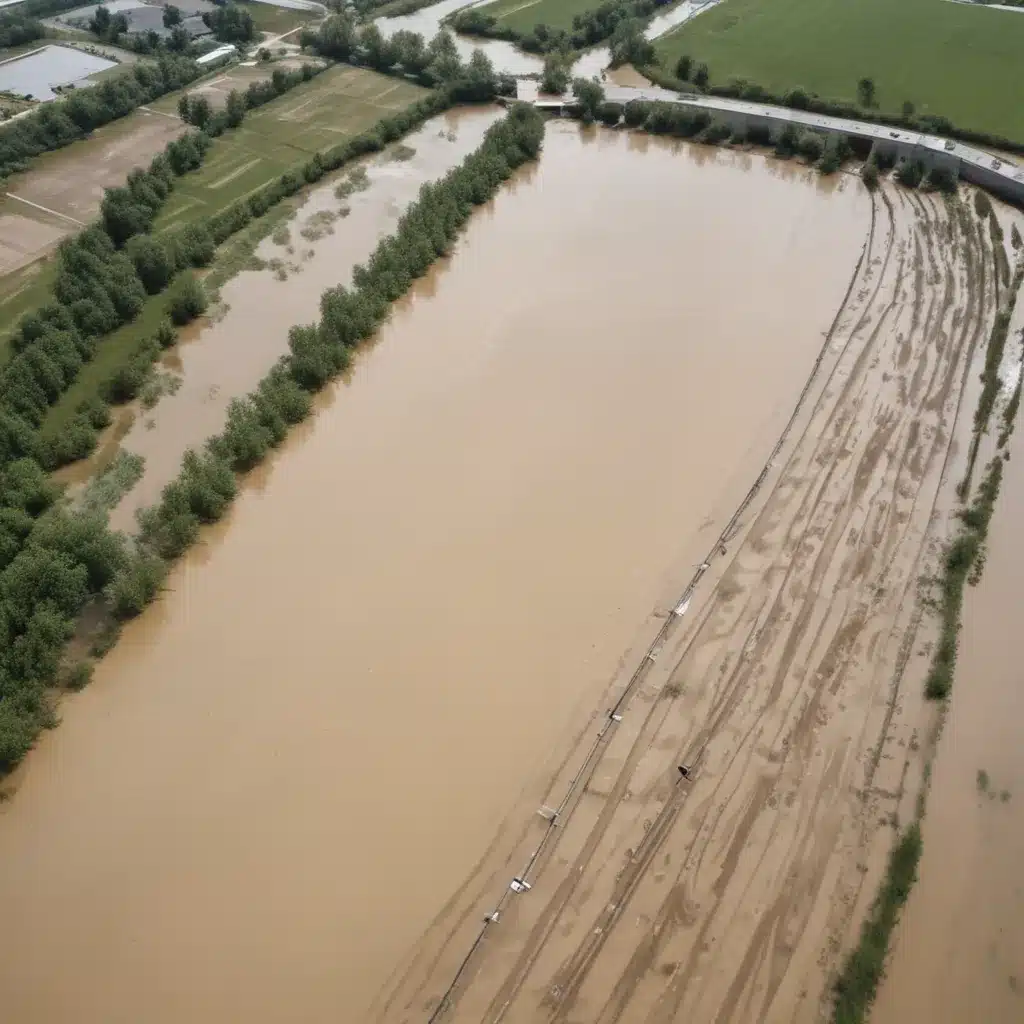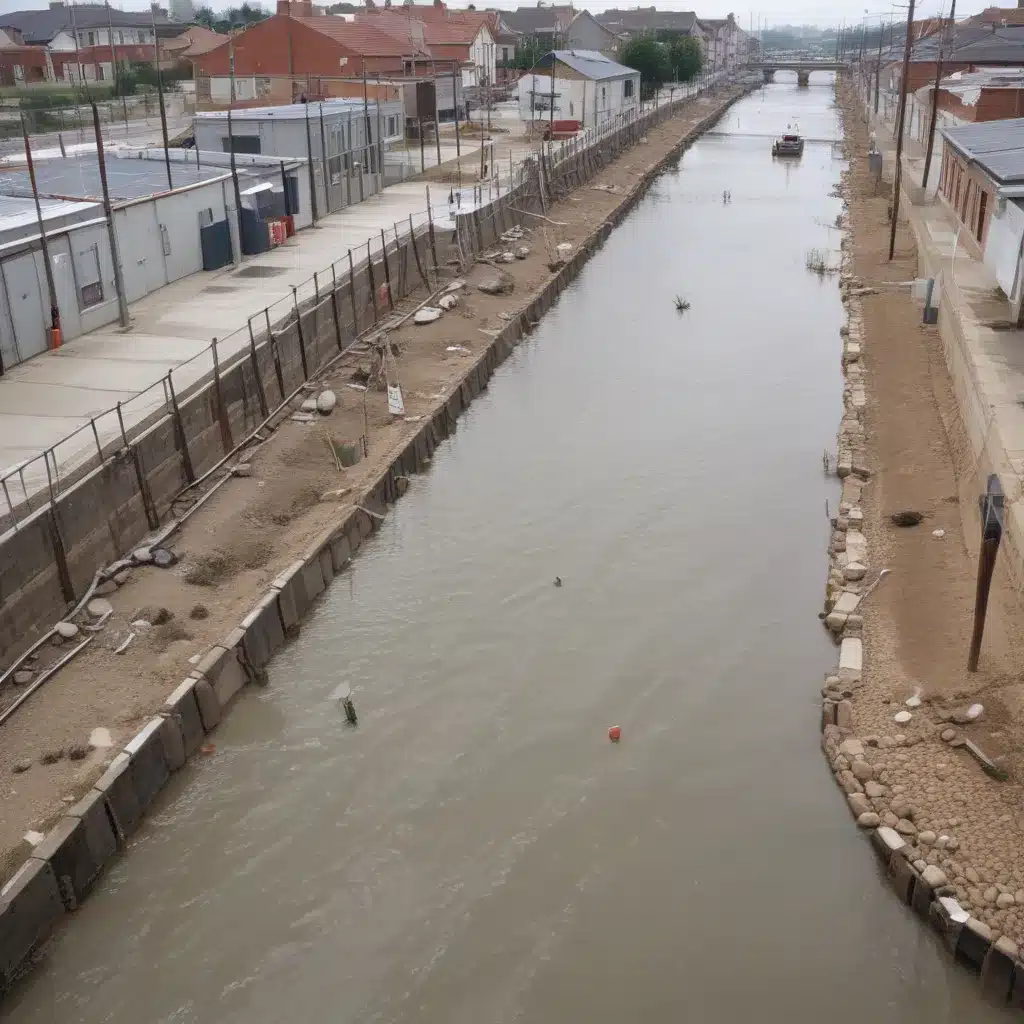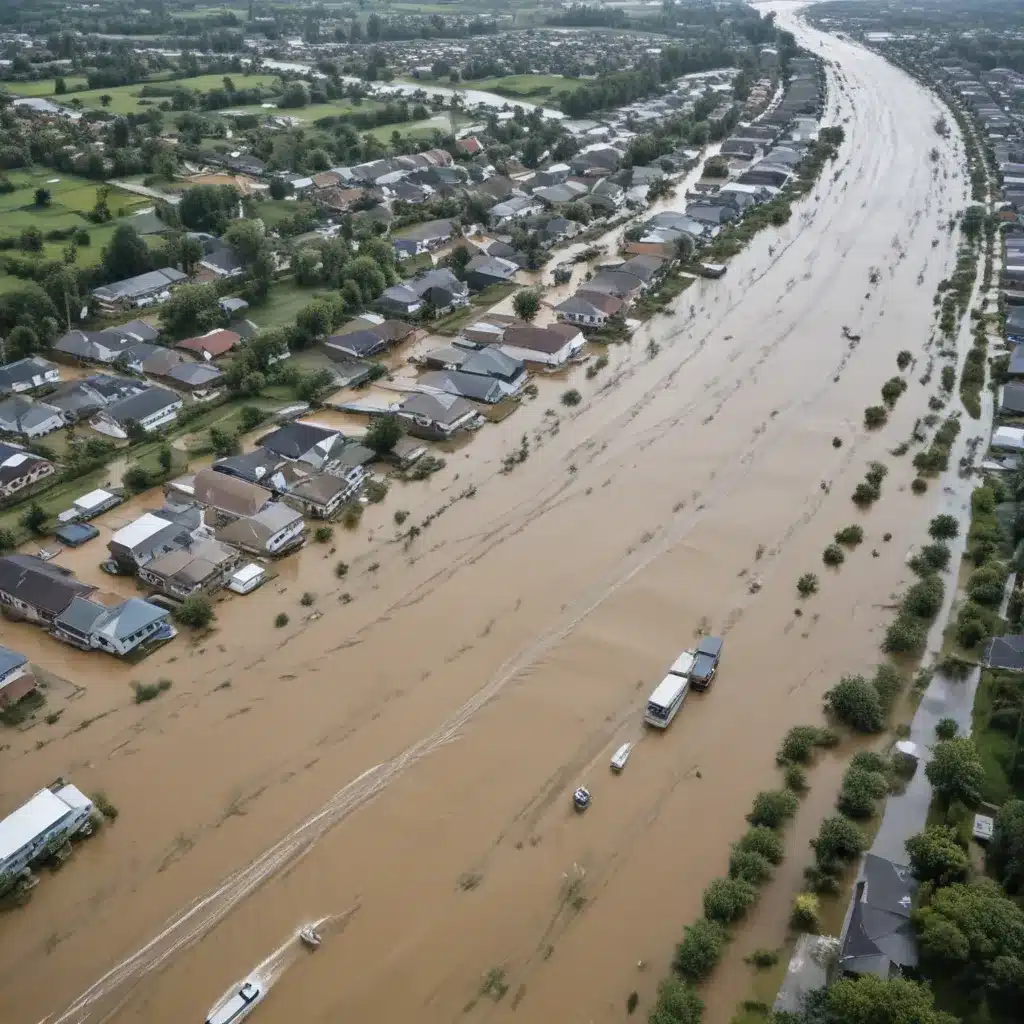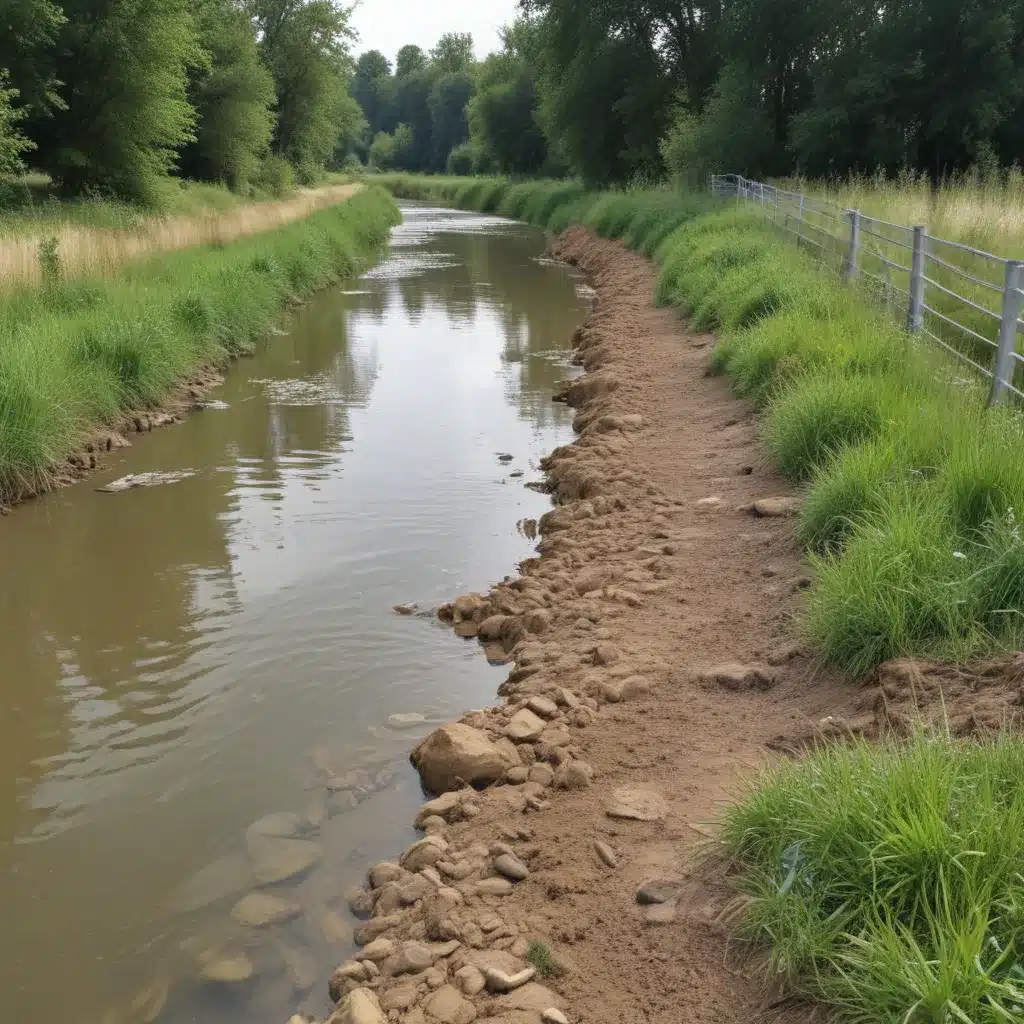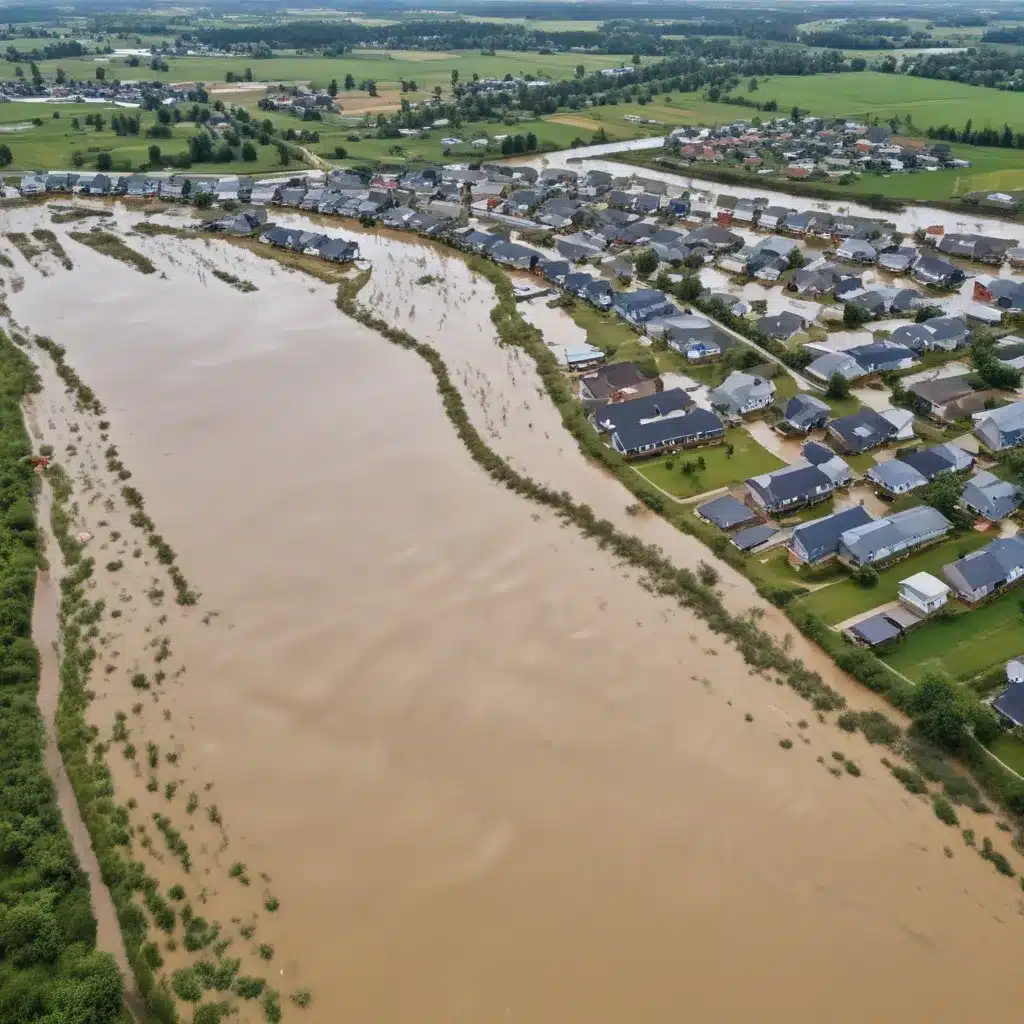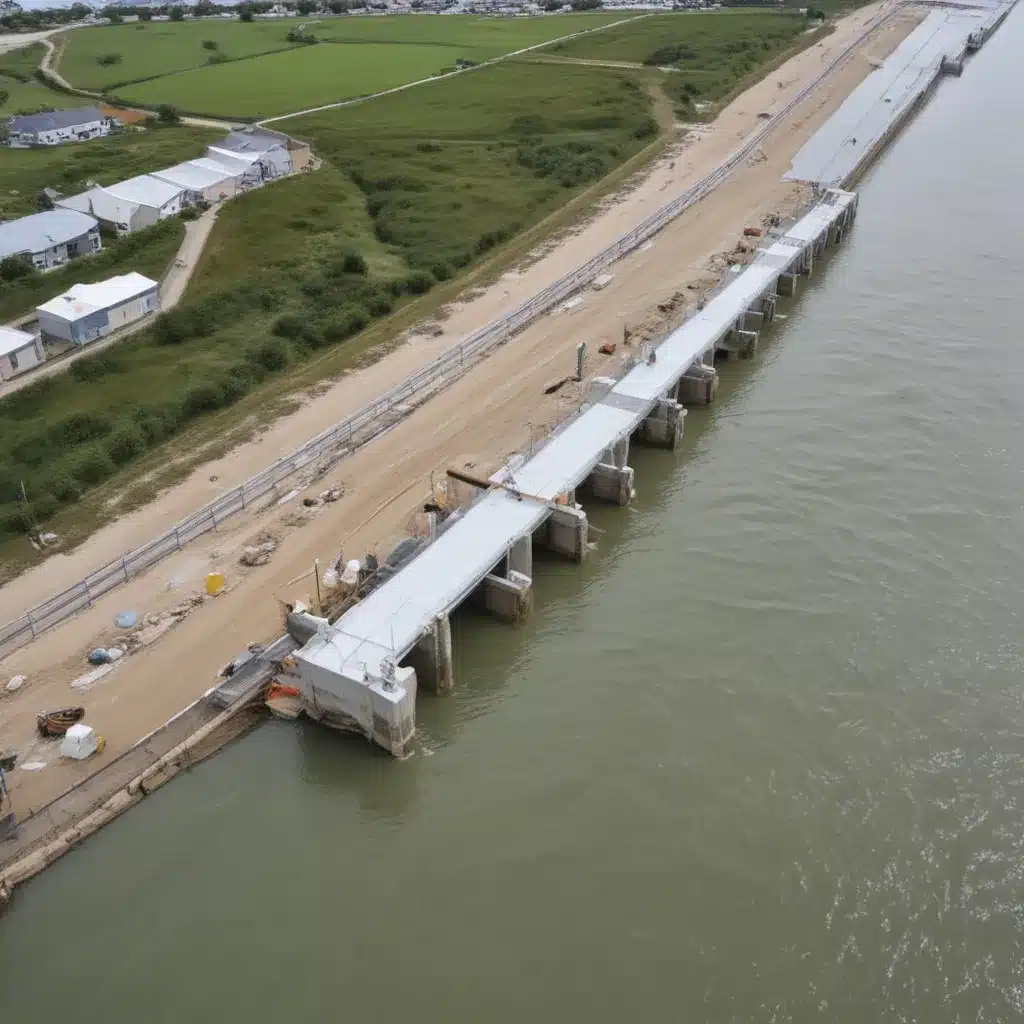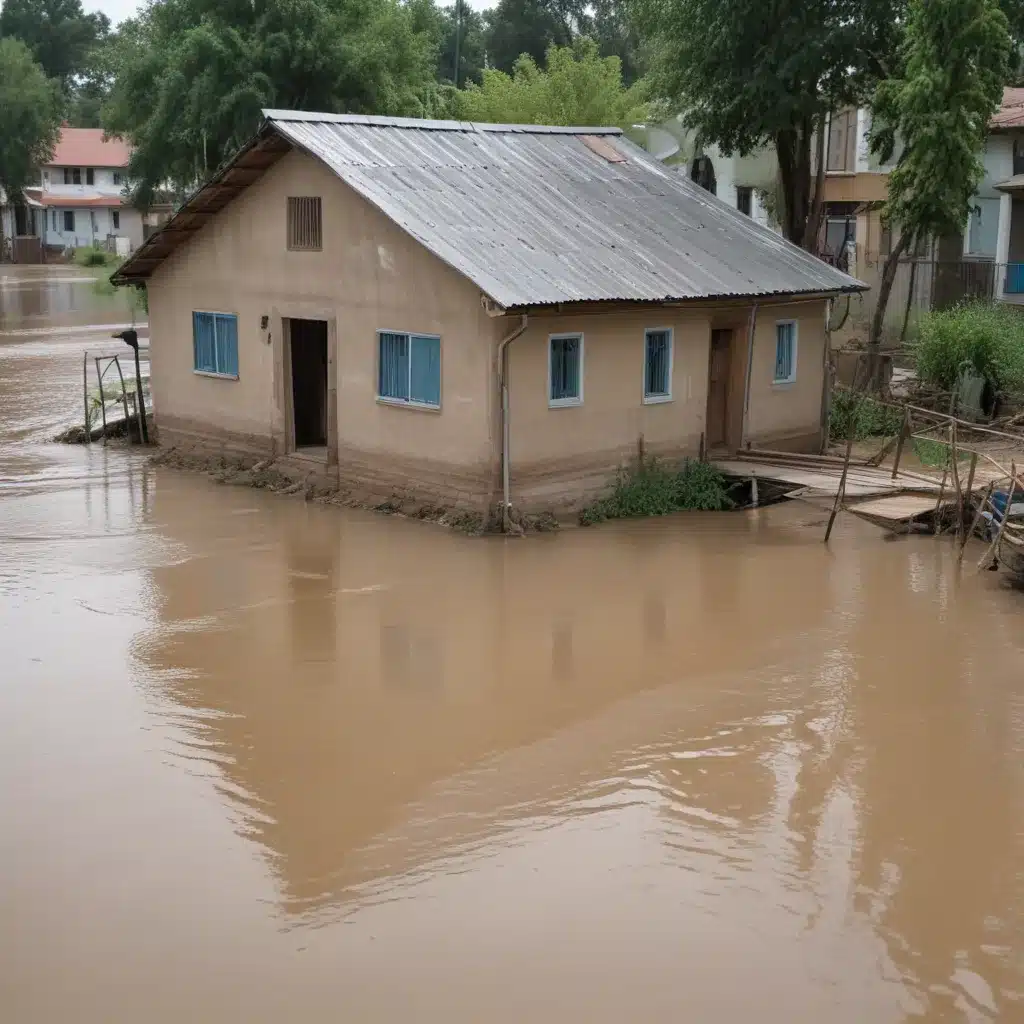In a world where the tides of uncertainty can rise unexpectedly and engulf communities in a torrent of chaos, it is fascinating to explore how different cultures navigate the treacherous waters of flooding. From ancient rituals passed down through generations to modern infrastructure designed to withstand nature’s wrath, the various ways in which societies perceive and prepare for this natural disaster is a captivating study. Join us as we embark on a journey through the cultural landscapes, where beliefs, traditions, and practical techniques converge to mitigate the devastating impact of flooding.
Key Takeaways
- Historical experiences with flooding have shaped societies and led to innovations in flood management.
- Cultural beliefs, traditions, and rituals play a role in how communities cope with and perceive flooding.
- Flooding disrupts essential services and has psychological and emotional impacts on individuals and communities.
- Collaboration and knowledge sharing, both at the local and international level, are crucial in addressing flooding challenges.
Historical Context
In understanding the impacts of flooding on different cultures, it is crucial to examine the historical context. The historical significance of flooding cannot be underestimated, as it has shaped societies and influenced their development over time. Throughout history, floods have had a profound societal impact, leaving behind a trail of destruction and forcing communities to adapt and innovate.
One such example of the historical significance of flooding is the Nile River in ancient Egypt. The annual flooding of the Nile brought fertile soil, allowing the civilization to thrive agriculturally. The Egyptians developed sophisticated irrigation systems and built their cities along the river, leveraging the benefits of flooding for their societal growth.
Similarly, the historical context of flooding can be seen in the case of the Netherlands. The Dutch have a long history of battling against floods, as a significant portion of their land lies below sea level. They have developed intricate systems of dikes, canals, and pumps to reclaim and protect their land. This historical struggle against flooding has shaped the Dutch identity and their expertise in water management, making them global leaders in flood prevention and mitigation.
Examining the historical context of flooding helps us understand the societal impact it has had on different cultures. From ancient Egypt to modern-day Netherlands, floods have influenced the way societies perceive and prepare for such natural disasters. The lessons learned from history have led to innovations in flood management and the development of resilient communities that can withstand the challenges posed by flooding. By understanding the historical significance of flooding, we can continue to innovate and adapt to ensure the safety and well-being of our communities in the face of future floods.
Cultural Beliefs and Traditions
When it comes to cultural beliefs and traditions surrounding flooding, there are several interesting points to consider. One of these points is the presence of rituals and ceremonies that have been passed down through generations, which often involve prayers and offerings to appease the spirits or gods associated with water. Additionally, many cultures have superstitions and folklore related to flooding, such as the belief that certain actions or objects can bring about or prevent floods. These cultural beliefs and traditions provide insight into how different societies have coped with and understood the phenomenon of flooding throughout history.
Rituals and Ceremonies
Sometimes, communities affected by flooding come together to perform rituals and ceremonies that are deeply rooted in their cultural beliefs and traditions. These rituals hold great ritual significance and cultural symbolism, serving as a way for the community to cope with the devastating effects of flooding and to seek solace and protection from higher powers.
- Ritual significance:
- The rituals performed during flooding serve as a way for the community to come together and support each other during difficult times.
- These rituals provide a sense of unity and strength, helping the community to overcome the challenges posed by flooding.
- Cultural symbolism:
- The rituals and ceremonies often incorporate symbols and elements that hold cultural significance, representing the community’s connection to their land, water, and ancestors.
- Through these rituals, the community reaffirms their cultural identity and reinforces their bond with the natural world.
Superstitions and Folklore
Our cultural beliefs and traditions are deeply intertwined with superstitions and folklore surrounding flooding. Superstitions and psychology play a significant role in how different cultures perceive and respond to the threat of floods. Many communities believe in supernatural beings or spirits that control the water, and they develop rituals and practices to appease these entities. For example, some cultures believe that throwing coins into the water can calm the spirits and prevent floods. These superstitions serve as psychological coping mechanisms, providing a sense of control and comfort in the face of an unpredictable natural disaster. Additionally, folklore often contains valuable lessons and resilience strategies passed down through generations. Stories of survival and adaptation provide communities with practical knowledge and inspire innovative approaches to flood preparedness and recovery. Understanding and respecting these superstitions and folklore can foster cultural sensitivity and collaboration in developing effective flood mitigation strategies.
Impact on Daily Life
When it comes to the impact of flooding on daily life, there are several key points to consider. First, cultural adaptation strategies play a crucial role in how communities cope with and recover from floods. Second, the disruption of essential services such as electricity, water, and transportation can severely affect people’s ability to carry out their daily activities. Lastly, the psychological and emotional effects of living in a flood-prone area can have long-lasting impacts on individuals and communities alike.
Cultural Adaptation Strategies
Cultural adaptation strategies play a significant role in shaping daily life for communities affected by flooding. These strategies involve the process of cultural assimilation, where individuals and communities incorporate new ideas and practices into their existing cultural framework. Intercultural communication is a key component of these strategies, as it enables the exchange of knowledge and experiences between different cultures. Through intercultural communication, communities can learn from each other’s experiences and develop innovative solutions to mitigate the impact of flooding on their daily lives. Some examples of cultural adaptation strategies include:
- Building resilient infrastructure: Communities can develop innovative infrastructure solutions that are designed to withstand flooding and minimize damage.
- Education and awareness programs: By raising awareness about the risks and impacts of flooding, communities can empower individuals to take proactive measures to protect themselves and their properties.
Disruption of Essential Services
The disruption of essential services during flooding significantly impacts the daily lives of affected communities. When floodwaters rise, they can damage critical infrastructure such as power lines, water treatment plants, and transportation systems. This disruption leaves communities without access to electricity, clean water, and reliable transportation, causing immense challenges for individuals and families trying to go about their daily lives. The impact is even more severe for vulnerable populations, such as the elderly, disabled, and low-income households, who may already face difficulties in accessing essential services under normal circumstances. The loss of infrastructure exacerbates their vulnerability and further limits their ability to meet their basic needs. In order to address this issue, innovative solutions are needed to ensure the resilience of essential services during flooding events, prioritizing the well-being of all community members.
Psychological and Emotional Effects
The psychological and emotional effects of flooding significantly impact the daily lives of those affected, causing distress and disruption to normal routines. These effects can result in long-lasting psychological trauma, affecting individuals and communities alike. Here are two key ways in which flooding affects the psychological and emotional well-being of those affected:
-
Increased stress and anxiety: Flooding can lead to feelings of fear, helplessness, and uncertainty. The loss of personal belongings, damage to homes, and the need to evacuate can all contribute to heightened stress levels and anxiety.
-
Social isolation and loss of community: Flooding often forces individuals to leave their homes and communities, leading to a sense of displacement and isolation. Additionally, the trauma of experiencing a natural disaster can make it difficult for individuals to rebuild trust and form new social connections.
In order to address the psychological and emotional effects of flooding, community support and mental health resources are crucial. These can provide individuals with the necessary tools to cope with trauma and rebuild their lives with resilience.
Traditional Flood Preparedness Techniques
Throughout history, communities have devised ingenious ways to protect themselves from the devastating effects of floods. These traditional flood preparedness techniques are rooted in historical practices and indigenous knowledge, showcasing the resourcefulness and innovation of different cultures.
To illustrate the diversity of these techniques, let’s examine a table that highlights some examples from around the world:
| Region | Traditional Technique |
|---|---|
| Netherlands | Building and maintaining dikes |
| China | Terracing to control water flow |
| India | Constructing stepwells for water storage |
| Peru | Constructing canals and aqueducts |
In the Netherlands, a country that is known for its battle against water, communities have mastered the art of building and maintaining dikes. These protective barriers not only prevent flooding but also allow for land reclamation, creating valuable agricultural and residential areas.
In China, terracing is a traditional technique used to control water flow on steep slopes. By transforming hillsides into a series of flat terraces, this method helps to slow down the movement of water, preventing erosion and reducing the risk of flash floods.
In India, stepwells have been a significant part of flood preparedness for centuries. These elaborate underground structures are used to store water during monsoon seasons, ensuring a steady supply during periods of drought and preventing waterlogging in surrounding areas.
Peru, on the other hand, has a long tradition of constructing canals and aqueducts to manage water flow. These systems, dating back to the Inca civilization, effectively control the movement of water and distribute it to agricultural fields, minimizing the impact of floods.
Role of Government and Authorities
Now let’s talk about the role of government and authorities in managing flooding. When it comes to flood response measures, the government plays a crucial role in implementing emergency preparedness plans. Local authorities also have an important role in coordinating and executing these plans at the community level. Together, the government and authorities work to ensure the safety and well-being of the population during flood events.
Government Response Measures
Government response measures play a crucial role in mitigating the impact of flooding in different cultures. To effectively address this issue, innovative approaches are needed. Here are some key points to consider:
-
Government Aid:
-
Developing comprehensive disaster relief programs to provide immediate assistance to affected communities.
-
Allocating sufficient funds for emergency response and recovery efforts.
-
Infrastructure Development:
-
Implementing sustainable infrastructure projects, such as flood barriers and drainage systems, to reduce the vulnerability of communities to flooding.
-
Investing in advanced technologies for early warning systems and real-time monitoring of water levels.
Emergency Preparedness Plans
To effectively address the challenges of flooding, a coordinated effort from government and authorities is essential in developing robust emergency preparedness plans. Government funding plays a crucial role in ensuring the implementation of these plans. Adequate financial resources are needed to invest in infrastructure improvements, such as flood barriers and early warning systems, as well as training and equipment for emergency response teams. Additionally, community engagement is vital in creating effective emergency preparedness plans. By involving local residents and businesses in the planning process, governments can gain valuable insights and knowledge about the specific needs and vulnerabilities of different communities. This collaborative approach fosters innovation and ensures that emergency plans are tailored to the unique characteristics of each region. Through government funding and community engagement, we can build more resilient and adaptive strategies to mitigate the impacts of flooding.
Role of Local Authorities
Local authorities play a crucial role in managing and responding to flooding incidents. They are responsible for coordinating and implementing strategies to mitigate the impact of floods on communities. Here are two key ways in which local authorities contribute to flood management:
-
Collaborating with NGOs:
-
Local authorities work closely with non-governmental organizations (NGOs) to develop and implement effective flood management plans.
-
NGOs provide valuable expertise and resources that complement the efforts of local authorities in preparing for and responding to flooding incidents.
-
Supporting community initiatives:
-
Local authorities encourage and support community initiatives aimed at flood prevention and preparedness.
-
They provide funding, technical assistance, and guidance to empower communities to take proactive measures to reduce their vulnerability to floods.
Community Resilience Strategies
In the face of flooding, our community has developed effective strategies to build resilience. Through community engagement and infrastructure development, we have created innovative solutions to mitigate the impact of flooding and ensure the safety and well-being of our residents.
One of our key strategies is community engagement. We have actively involved our community members in the decision-making process, seeking their input and feedback on flood prevention measures. By engaging with residents, we have been able to tap into their local knowledge and experiences, gaining valuable insights that have informed our resilience strategies. This collaborative approach has fostered a sense of ownership and responsibility among community members, empowering them to take an active role in protecting their homes and neighborhoods.
In terms of infrastructure development, we have implemented innovative solutions that enhance our community’s resilience to flooding. We have invested in the construction and maintenance of flood-resistant structures, such as levees, flood walls, and drainage systems. These infrastructure developments have effectively reduced the risk of flooding and minimized the damage caused by heavy rainfall.
Furthermore, we have embraced technological advancements to improve our resilience. Our community has implemented early warning systems that provide real-time information about weather conditions and flood risks. This enables us to take proactive measures, such as evacuations and emergency preparedness, to protect our residents.
Urban Vs. Rural Perspectives
When it comes to managing floods in urban areas, our focus is on developing effective flood management systems that can mitigate the damage caused by heavy rainfall and overflowing rivers. In contrast, rural communities often rely on preparedness measures to minimize the impact of floods, such as early warning systems and community-based flood response plans. Understanding the different perspectives between urban and rural areas is crucial in developing comprehensive strategies that address the specific needs and challenges of each community.
Urban Flood Management
We, as urban dwellers, face unique challenges in managing floods compared to our rural counterparts. The rapid urbanization and high population density often strain urban flood infrastructure, making it more susceptible to damage and disruption during floods. To effectively manage urban flooding, innovative approaches are needed. Here are two key aspects of urban flood management:
-
Urban flood infrastructure: Developing resilient and adaptive urban flood infrastructure is crucial in mitigating flood risks. This includes innovative solutions such as green roofs, rain gardens, and permeable pavements, which can help absorb and redirect water runoff.
-
Flood risk assessment: Utilizing advanced technology and data analysis, urban areas can conduct comprehensive flood risk assessments. This includes mapping flood-prone areas, identifying vulnerable infrastructure, and developing emergency response plans to minimize the impact of flooding.
Rural Flood Preparedness
Rural flood preparedness poses unique challenges and perspectives compared to urban areas. In rural communities, cultural practices and agricultural impact play a significant role in how floods are perceived and prepared for. Unlike urban areas, where infrastructure and technology are readily available, rural communities often rely on traditional methods passed down through generations. These cultural practices, such as building elevated platforms for homes or using natural materials, reflect the resourcefulness and ingenuity of rural communities. Additionally, the agricultural impact of flooding cannot be underestimated. Rural areas heavily depend on agriculture for their livelihoods, making flood preparedness crucial to protect their crops and livestock. Innovative approaches that integrate traditional knowledge with modern techniques can help rural communities enhance their flood preparedness and resilience, ensuring the sustainability of their agricultural practices for future generations.
Technological Advancements
Our understanding of the impact of flooding has been greatly enhanced through technological advancements. Technological innovation has revolutionized the way we approach flood forecasting, allowing us to predict and prepare for these natural disasters with greater accuracy and efficiency.
Here are two key ways in which technology has transformed flood forecasting and preparedness:
-
Advanced Data Analysis: With the advent of sophisticated data analysis tools and techniques, we are now able to process vast amounts of information in real-time. This enables us to monitor weather patterns, river levels, and other relevant data points more effectively. By analyzing historical data and patterns, we can make more accurate predictions about when and where flooding is likely to occur. This helps communities and authorities to take proactive measures to mitigate the impact of floods.
-
Remote Sensing and Monitoring: Remote sensing technologies, such as satellites and drones, have revolutionized our ability to monitor and assess flood situations from a distance. These tools provide high-resolution imagery and data that allow us to identify vulnerable areas, assess the extent of flooding, and monitor the effectiveness of flood defenses. By having real-time information at our fingertips, we can make more informed decisions and respond quickly to changing flood situations.
With the continuous advancements in technology, we can expect even more innovative solutions in the future. For instance, the integration of artificial intelligence and machine learning algorithms into flood forecasting models can enhance their accuracy and predictive power. Additionally, the use of Internet of Things (IoT) devices and sensors can provide real-time data on water levels, rainfall, and soil moisture, enabling us to have a more comprehensive understanding of flood conditions.
As we harness the power of technology, we are better equipped to mitigate the impact of flooding and protect vulnerable communities. By embracing innovation, we can build a more resilient future where the devastating effects of flooding are minimized.
Education and Awareness Programs
As we continue to explore the ways technology has transformed flood forecasting and preparedness, an equally important aspect in mitigating the impact of flooding lies in the implementation of education and awareness programs. Education campaigns and community engagement play a crucial role in equipping individuals and communities with the knowledge and skills needed to understand, prepare for, and respond to floods.
Education campaigns serve as a means to disseminate information about flood risks, prevention strategies, and emergency procedures. By utilizing innovative communication channels such as social media, mobile applications, and interactive workshops, these campaigns can effectively reach a wider audience and engage them in the learning process. Through the use of engaging visuals, interactive simulations, and real-life case studies, education programs can foster a sense of urgency and empower individuals to take necessary actions to protect themselves and their communities.
Community engagement is another vital component of education and awareness programs. By involving local residents, businesses, and organizations in the planning and implementation of flood preparedness initiatives, communities can work together to develop effective strategies that cater to their specific needs and challenges. This collaborative approach not only increases the ownership and effectiveness of flood preparedness efforts but also fosters a sense of unity and resilience within the community.
Climate Change Adaptation Measures
Implementing effective climate change adaptation measures is crucial in minimizing the impact of flooding on different cultures. As the consequences of climate change become increasingly evident, it is essential for societies to develop innovative strategies to adapt to the changing environment. Here are some key climate change adaptation measures and their economic implications:
-
Investing in Infrastructure: Developing and improving infrastructure can help communities withstand and recover from flooding events. This includes constructing flood-resistant buildings, enhancing drainage systems, and implementing early warning systems. While these investments may require significant upfront costs, they can reduce long-term economic losses caused by flooding.
-
Promoting Sustainable Land Use: Encouraging sustainable land use practices, such as preserving wetlands and forests, can help mitigate flooding risks. These natural ecosystems act as buffers, absorbing excess water and reducing the likelihood of floods. Additionally, implementing zoning regulations to prevent construction in high-risk areas can save communities from future damages and financial burdens.
-
Economic Implications: While these measures may require initial financial investments, they can result in long-term cost savings by preventing property damage, reducing insurance premiums, and minimizing the need for disaster response and recovery efforts.
-
Economic Opportunities: Embracing climate change adaptation measures can also create new economic opportunities. For example, the development of green infrastructure projects can create jobs and stimulate local economies. Moreover, investing in renewable energy sources can help reduce greenhouse gas emissions and contribute to a sustainable future.
Cultural Taboos and Superstitions
Cultural taboos and superstitions play a significant role in shaping how different societies perceive and respond to flooding events. These deeply ingrained cultural practices and supernatural beliefs have a profound impact on the actions and decisions made by communities facing the threat of flooding.
In many cultures, specific cultural practices are observed to appease the supernatural forces believed to govern natural disasters like flooding. For example, in some parts of Southeast Asia, communities engage in rituals and ceremonies to seek protection from floods. These rituals may involve offerings to deities or ancestral spirits, as well as performing dances or reciting prayers. Such practices are deeply rooted in the belief that supernatural powers can influence the outcome of natural events.
Superstitions also play a role in shaping people’s responses to flooding. In some cultures, certain actions or objects are considered taboo during flooding events. For instance, in parts of Africa, it is believed that using a broom during a flood can attract more water and worsen the situation. This superstition leads people to avoid sweeping during floods, even when it may be necessary to maintain cleanliness and hygiene.
Understanding and respecting these cultural taboos and superstitions is crucial for effective flood response and preparedness. By incorporating local cultural practices and beliefs into disaster management plans, authorities can engage with communities in a more meaningful way. This approach not only ensures that the response is culturally sensitive but also empowers communities to actively participate in their own resilience building.
Evacuation and Sheltering Practices
Evacuation and sheltering practices are essential aspects of disaster management during flooding events. When it comes to dealing with floods, it is crucial to have efficient strategies in place to ensure the safety and well-being of affected communities. Here are some innovative approaches that can be taken to improve evacuation and sheltering practices:
-
Government Assistance
-
Implementing advanced technology: Governments can leverage technological advancements such as real-time flood monitoring systems and early warning systems to provide timely information to residents. This enables them to take necessary evacuation measures promptly.
-
Utilizing social media and mobile apps: Governments can develop mobile applications and use social media platforms to disseminate information about evacuation routes, available shelters, and emergency contact numbers. This ensures that residents have easy access to vital information during flood events.
-
Community Support
-
Establishing community-based early warning systems: Communities can work together to establish local early warning systems, where residents are trained to recognize flood warning signs and relay the information to others in the community. This creates a network of support and increases the effectiveness of evacuation efforts.
-
Strengthening community resilience: Communities can be empowered through education and training programs that focus on disaster preparedness and response. This includes conducting mock evacuation drills, providing first aid training, and promoting self-sufficiency during emergencies.
Role of Religion and Spirituality
Religion and spirituality play significant roles in the context of flooding, providing solace and hope to affected communities. This is especially true for indigenous communities, who often have deep spiritual connections to the land and water. The impact of flooding on religious sites can be devastating, as these places hold sacred significance and serve as gathering spaces for worship and community events.
To understand the role of religion and spirituality in the face of flooding, it is important to acknowledge the diverse beliefs and practices of different cultures. In many indigenous communities, the relationship between humans and nature is seen as sacred, with rivers and other bodies of water considered as living entities. When floods occur, it is not only seen as a natural disaster but also as a disruption in the balance of this sacred relationship.
To evoke a sense of emotion, consider the following table:
| Indigenous Community | Role of Religion and Spirituality | Impact on Religious Sites |
|---|---|---|
| Native American | Seek guidance from tribal elders and perform religious ceremonies to restore harmony with nature | Damage to sacred sites disrupts cultural practices and connection to ancestral lands |
| Maori | Perform traditional rituals to appease water deities and protect communities | Flooding can damage marae (traditional meeting grounds) and sacred forests |
| Hindu | Offer prayers to river deities and seek blessings for protection during floods | Temples and pilgrimage sites along rivers can be submerged or damaged |
This table provides a glimpse into the diverse ways in which religion and spirituality are intertwined with the experiences of flooding in different cultures. By acknowledging the role of indigenous communities and the impact on religious sites, we can better understand the importance of incorporating cultural perspectives into flood preparedness and response efforts.
Economic Implications
As we shift our focus to the economic implications of flooding, it is important to consider the financial toll that these natural disasters can have on affected communities. Flooding can result in significant economic impact, particularly in terms of infrastructure damage. Here are a couple of key points to consider:
-
Cost of infrastructure repair: Flooding can cause extensive damage to roads, bridges, buildings, and other critical infrastructure. The cost of repairing and restoring these structures can be astronomical, putting a strain on the budgets of affected communities. Innovative solutions that focus on building flood-resistant infrastructure and implementing early warning systems can help mitigate these costs.
-
Disruption to local economy: Flooding can disrupt the local economy in various ways. Businesses may be forced to shut down temporarily or permanently, leading to job losses and a decrease in economic activity. Additionally, agricultural communities may experience crop damage and loss of livestock, impacting the agricultural sector. Implementing innovative strategies such as diversifying the local economy and promoting small business resilience can help communities recover more quickly.
-
Insurance costs: Flood insurance premiums can increase significantly after a major flood event. This can place a financial burden on homeowners and businesses, making it harder for them to recover and rebuild. Exploring innovative insurance options, such as parametric insurance or community-based risk-sharing programs, can help alleviate this burden and ensure financial resilience in the face of future flood events.
International Collaboration and Knowledge Sharing
Collaborating internationally and sharing knowledge is crucial in addressing the challenges posed by flooding. In order to effectively tackle the complex issues associated with floods, it is essential for countries and communities to come together and exchange ideas, experiences, and expertise. Through international collaboration and knowledge sharing, innovative solutions can be developed, leading to more resilient and adaptive measures against flooding.
To illustrate the importance of international collaboration and knowledge sharing, let’s take a look at the following table:
| Country | Collaboration Initiatives | Knowledge Sharing Programs |
|---|---|---|
| United States | International Flood Management Conferences | Sharing best practices through online platforms |
| Netherlands | Delta Alliance – Global network for delta solutions | Hosting workshops and training programs for international participants |
| Bangladesh | Participating in regional forums on flood management | Creating a knowledge exchange platform for sharing research findings |
As seen in the table, various countries have recognized the value of collaboration and knowledge sharing when it comes to addressing flooding. The United States, for example, actively engages in international conferences to discuss flood management strategies and share insights with other nations. The Netherlands, known for its expertise in water management, has established the Delta Alliance to foster global collaboration in finding solutions for delta regions. Bangladesh, a country prone to severe flooding, actively participates in regional forums to learn from neighboring countries’ experiences and also promotes the creation of a knowledge exchange platform to disseminate research findings.

